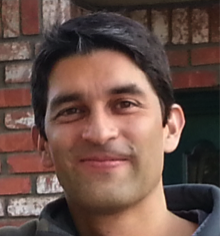
Abstract
Organic photovoltaic devices (OPVs), that utilize organic small molecules and/or polymers to directly convert sunlight to electricity, are an attractive technology for sustainable, low cost, clean energy production. For example, solution-processed bulk heterojunction (BHJ) OPVs have attracted much attention because of their potential for flexible, light-weight, large area and low-cost device fabrication. In particular, fullerene compounds have been the dominating electron acceptor/transport material in BHJ OPVs. However, fullerene compounds have some disadvantages, such as low absorption in the visible spectrum, low extinction coefficient, high-cost synthesis and purification, and a low lying LUMO that generally results in low open circuit voltages (Voc). In an attempt to solve these problems, presented here is a family of new electron acceptor materials from simple, minimal step, high yield, and inexpensive synthetic processes for application in OPVs. The new electron accepting molecules are designed with extended π-conjugated systems that help contribute to significant absorption of the visible spectrum, and tunable chemistry to allow for varying of HOMO/LUMO levels and solubility. The synthesis, characterization, and initial solution processed OPV results using these new materials with selected electron donor materials will be shown. To date, our efficiencies of 3.7% and Voc’s of 1.1V are one of the highest to our knowledge for non-fullerene based solution processed OPVs. Lastly, the seminar will introduce the concept of a ternary BHJ system where a low band gap dye can be introduced to the system resulting in a 15-20% enhancement in efficiencies by absorbing photons between 750-830 nm.
Biography
Alan Sellinger received his BS in Chemistry from Eastern Michigan University in 1989 then worked as a Research Associate at Gelman Sciences (now Pall) from 1989-1991. He received his PhD in Macromolecular Science and Engineering from the University of Michigan in 1997. He then spent two years as a post-doctoral fellow at Sandia National Laboratories. Alan then moved back to industry as a Research Scientist in OLEDs with Canon R&D Center and Opsys from 1998-2003. He next moved overseas as a Senior Scientist at the Institute of Materials Research and Engineering (IMRE) Republic of Singapore from 2003-2008, then back to USA as a Consulting Assoc. Prof. MSE/Executive Director of the Center for Advanced Molecular Photovoltaics (CAMP) at Stanford University from Aug 2008-2012. Since Aug. 2012 Alan is an Associate Professor in Chemistry at the Colorado School of Mines with a joint appointment at NREL. Alan has published over 20 patents and 70 papers that have been cited nearly 4400 times. His primary interest is in the design, synthesis and characterization of organic/hybrid semi-conductors for application in displays, lighting, solar cells and transistors.